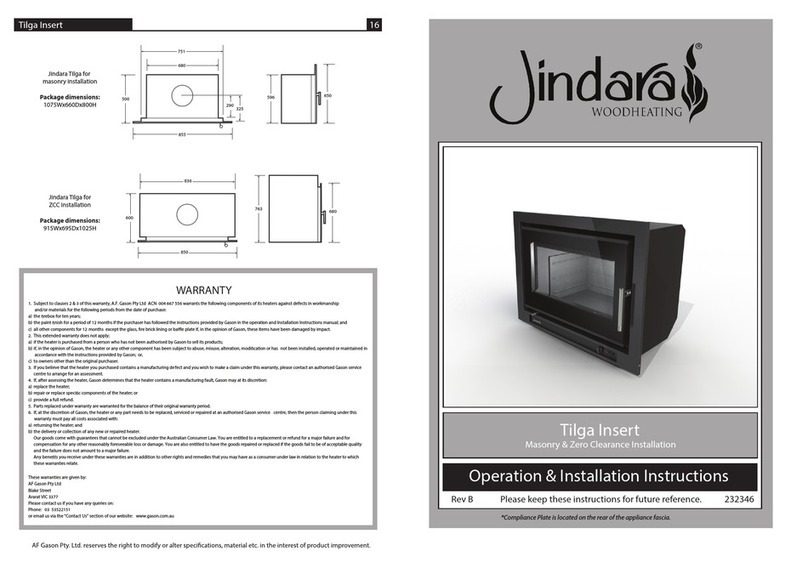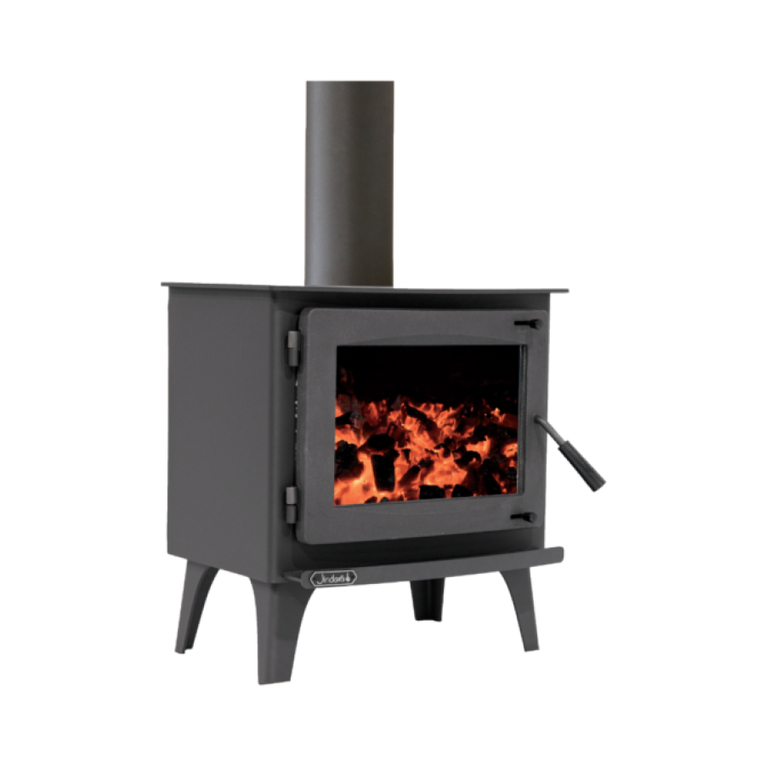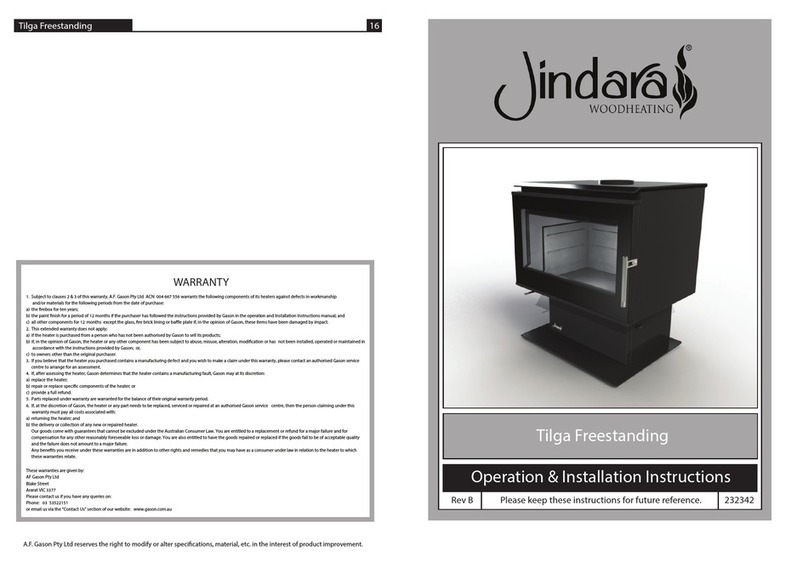Duo Freestanding
4
Duo Freestanding
5
Fitting the Baffle Plate
After you have completed the installation you firstly have to fit the baffle plate into the heater.
With lips facing upright and to fronts of heater, put the baffle plate back into the heater by putting the right side of the
plate through the door opening and then the left.
Holding the plate in two hands under the plate, lift the right hand side up hard against the top and right hand side of the
firebox. Then lift the left hand side past the retaining lugs on the left hand side of the firebox.When the plate is level,
slowly lower it onto the baffle plate retainers. Ensure the baffle plate is sitting evenly in the retainers.
!
WARNING
WITH THE CURVED LIPS FACING UPRIGHT, ENSURE THE BAFFLE IS SITTING
CORRECTLY. FAILURE TO DO SO WILL CAUSE THE APPLIANCE TO BE LESS
EFFICIENT AND OVER HEAT THE FLUE SYSTEM.
!
WARNING
DO NOT ATTEMPT TO OPERATE THIS APPLIANCE WITHOUT READING AND
UNDERSTANDING THESE OPERATING INSTRUCTIONS THOROUGHLY. FAILURE TO
OPERATE THIS APPLIANCE PROPERLY MAY CAUSE UNDUE DAMAGE TO THE
APPLIANCE OR RESULT IN A FLUE FIRE.
Take the carton of firebricks out of the heater firebox.
They are to be placed so that they stand on end
against the rear and two side walls of the firebox. You
will notice that the bricks have a bevel on one end.
Inside the firebox there is an angle iron firebrick
retaining bracket on each side. This is designed to sit
over the bricks and hold them in place.
The bevel end of the firebrick is to be placed towards
the bottom of the firebox, facing inside to the wall of
the firebox. Three whole bricks are to be placed each
side, as per diagram.
Push each brick firmly against the wall of the firebox .
Baffle Plate
Angle iron bracket
Operating your Jindara
Your first fire
On installation of your Duo it is necessary to place a 12mm (approx) layer of sand, soil or ash in the bottom of the
firebox. This is required for the first fire. Thereafter, when cleaning out the firebox, always leave the equivalent amount of
ash in the bottom.
Starting your fire
Place a firelighter or paper in the bottom of the firebox and place a large amount of small kindling on top. Ignite the
paper or the firelighter. Set the air control to high and leave the main door open approximately 25mm. When the kindling
is burning, place about four pieces of small wood on top of the burning kindling. Once the wood is alight, close the main
door. After approximately 20 minutes, turn the air control down to medium and, turn the fan on to low speed.
On the initial fire up you may detect smoke coming from the paint finish and from any oils that may be on the steel on
the outside of the firebox. This is normal. It is suggested to well ventilate your home on the initial fire up. Please refer to
our section ‘Paint curing and cure’.
The glass door
Always operate your heater with the door closed and locked. The only time you can leave the door open is on initial
lighting, or when reloading the heater. If at any stage you open both doors at the same time while the heater is in
operation, it is possible smoke will enter your room.
Care of your glass
If you are burning good dry wood, you will have very little discolouration of your glass in normal burning cycle. If you aim
for an eight to ten hour overnight burn, you should not get much discolouration.You can control this by adjusting the air
control, moving from the left and slowly creeping the control to the right.After a number of days you will find the right
position to suit your requirements and the fuel that you are using.
Cleaning the glass
Generally the only time you will possibly need to clean your glass is after a long overnight burn. If you find that you have
a wet sticky black film on your glass (creosote), it is better to burn the heater as normal for one load of wood.When the
wood has burnt down to a hot bed of embers, open the door and leave it wide open until the glass cools sufficiently to
be wiped with a damp cloth. This should clean all the white smoky film off the glass. Creosote on the glass is normally a
sign that you have tried to get too long an overnight burn or you have burnt excessively wet or green wood.If the film on
the glass won’t come off with a wet cloth, you can use wet ash from the ash bed as a cleaner or commercial products
such as Crystal Clear, Johnson Foam Clean or Windex.
Normal Operations
When you get up in the morning, open up the air control of the heater to high position to start the embers glowing. Place
three or four pieces of wood on top of the embers and leave the door open 25mm. Once the fuel starts to flame close
the door. As the heater starts to heat up turn the fan on to low, (approx 20 minutes) and begin reducing the air control
towards a lower setting. You will find with the fan on low you will only need to run the heater between low and medium
to maintain the temperature you desire in your home.To obtain the maximum heat dissipation from the heater it is
necessary to run the fan at any time the heater is running above the low position.
For best results it is best to burn 400 - 450 mm long wood and load your wood straight into the firebox front to rear. This
will give optimum efficiency and recoverable heat, and minimise creosote formation and smoke emissions.
Placement of firebricks in firebox
Installation (Continued)
Read these instructions
Installation Permit
Depending on what your local authority requires, a permit may be required for the installation of your heater. It is your
responsibility to arrange the same.
fire bricks
bevelled edge
























